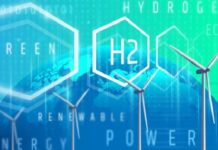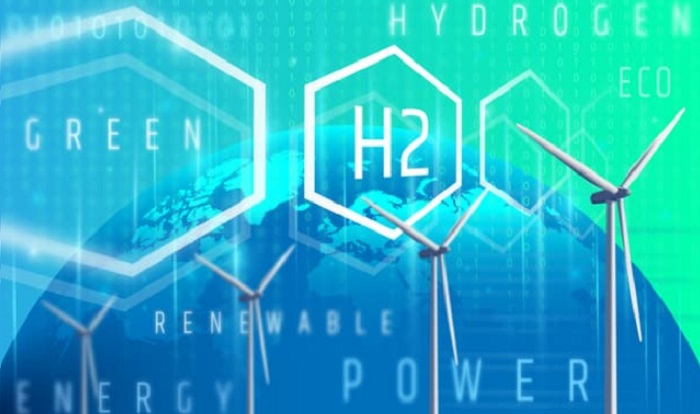In the never-ending quest when it comes to sustainable as well as green energy solutions, a pathbreaking discovery has been led by Ryuhei Nakamura from the RIKEN Center for Sustainable Resource Science- CSRS, Japan, and has gone on to signal a massive shift.
Apparently, the team’s innovative development when it comes to longer-lasting earth-abundant catalysts in terms of Proton Exchange Membrane- PEM electrolysis goes on to present quite a promising leap when it comes to realizing a sustainable hydrogen-based energy economy.
Their refined catalyst, happened to have manganese oxide- MnO2, which in a way underpins this evolution. The breakthrough goes on to hinge on the manipulation of the catalyst’s 3D structure so as to augment stability, hence extending lifespan by a phenomenal 4,000%.
Almost two years after their initial discovery, which went on to revolutionize acid-water electrolysis sans relying on rare earth metals, Nakamura along with his team have gone on to achieve yet another significant milestone. By way of enhancing stability in terms of their previously developed process, they have in a way set the stage for more practical applications when it comes to green hydrogen production.
It is well to be noted that the new catalyst, which is developed for green hydrogen production, goes on to mark a notable enhancement in how efficiently water can get split into hydrogen as well as oxygen, a kind of process essential in terms of sustainable energy.
By way of making specific changes to the manganese oxide structure used in the catalyst, its ability to go ahead and maintain the water-splitting reaction happens to be greatly enhanced, thereby obtaining more than forty times the stability of the previous methods. Especially, one version of such a catalyst with a high level of a certain type of oxygen, amounting to 94%, demonstrated a phenomenal ability to keep reactions going through tough conditions for a complete month without faltering.
A very decent way to go ahead and envision this kind of improvement in the creation of green hydrogen is by way of comparing it to the process pertaining to baking a cake. The new catalyst happens to be like an improved recipe that not only makes the cake tastier but at the same time enables it to stay fresh for a much longer time.
The special ingredient in this is a common metal- manganese that’s tweaked just right to make the recipe work much better. Interestingly, this kind of tweak happens to help in producing hydrogen from water in a more efficient and steady way, and that too for longer periods sans needing a break.
This unprecedented progress goes on to pave the way for efficient as well as sustainable hydrogen production, which happens to be quite a critical component in terms of green hydrogen initiatives. It is well to be noted that when incorporated into the PEM electrolyzer, the new catalyst went on to maintain water electrolysis for almost six weeks at 200 mA/cm^2, thereby heralding an order-of-magnitude enhancement as compared to the previous non-rare metal catalysts.
In spite of such massive and exciting findings, there happens to be still a hurdle to overcome before such catalysts can go on to be applied on a large scale across industries.
The issue lies in achieving the levels of durability that are required for such catalysts to work for years, and that too in real-world conditions. At present, the catalysts have to reach a performance mark of 1000 milliamperes per square centimeter in order to make sure that they can function in a continuous way for several years, which, by the way, they have not achieved yet.
But Nakamura’s team is hopeful about this. They happen to be working on further enhancing the catalyst’s design, not only to meet high performance levels but at the same time to make the catalyst last much longer. Their objective, apparently, is to reach a position where they will not even require the use of rare and expensive elements such as iridium so as to produce hydrogen by way of water electrolysis.
Through making sure to champion the use of abundant materials in the production of hydrogen, the research goes on to lessen the reliance on rare materials that sync with wider sustainability objectives while also fostering resilience in a scenario of resource constraints. The fact is that this breakthrough is indeed a beacon of hope for not just the green energy sector but, at the same time, for global carbon neutrality efforts. The progress towards a viable as well as sustainable solution in terms of hydrogen production highlights the potential of green hydrogen as one of the major drivers when it comes to attaining the transition towards clean energy.
The fact is that one of the most compelling elements of this breakthrough within green hydrogen production happens to be its relevant and important decrease in the need for precious metal catalysts like iridium, which happen to be both costly and scarce.
The manganese oxide-based catalyst development happens to be a game-changer in this context since the fact is that manganese happens to be far more abundant as well as environmentally benign.
The fact is that mining for such metals not only goes on to involve massive environmental disruptions that are massive but also contributes to constraints as well as vulnerabilities in the supply chain, hence in a way affecting the scalability as well as sustainability of hydrogen production technologies.
Nakamura says that scaling up PEM electrolysis to the terawatt scale will require 40 years of iridium, which is in a way completely impractical and at the same time highly unsustainable. Nakamura goes on to stress the urgency in terms of finding choices for precious metals. This goes on to highlight the important nature of the work when it comes to addressing a very critical barrier in the path of a sustainable energy future. In a way, by prominently decreasing the industry’s reliance on rare metals, this kind of innovation goes on to promise to lessen the cost of green hydrogen production. Financially, it happens to accentuate hydrogen’s viability as a major energy carrier in a low-carbon economy of the future.










































